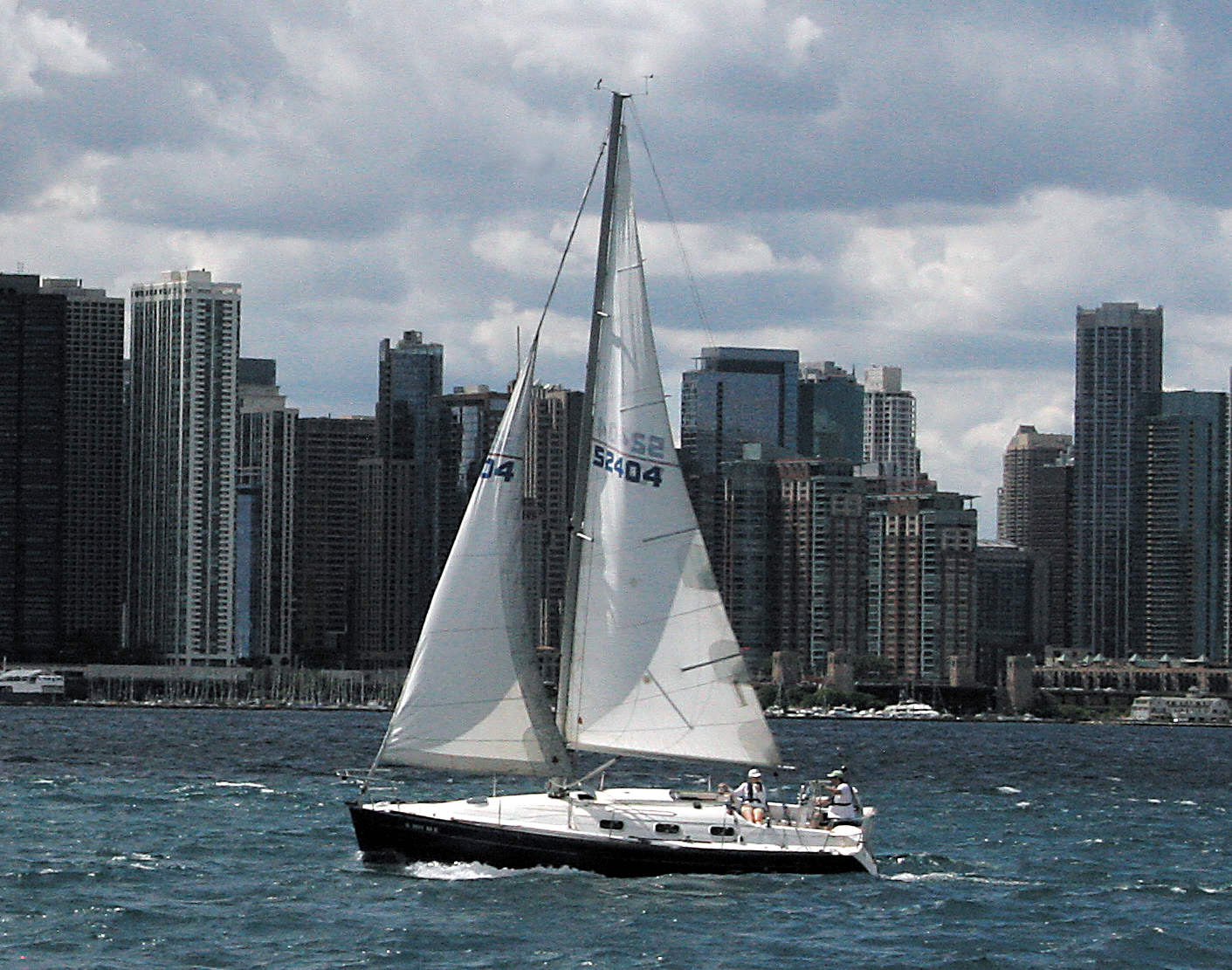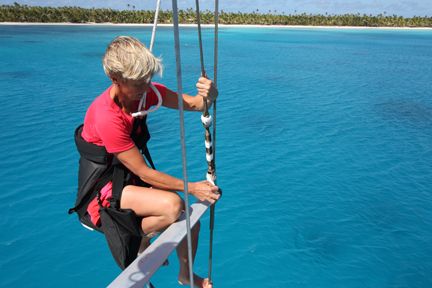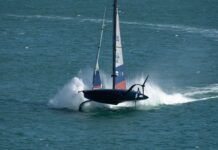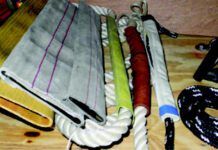On Watch: This 60-Year-Old Hinckley Pilot 35 is Also a Working Girl
Nestled among the super yachts berthed ostentatiously along Manhattan's North Cove—a well-to-do enclave near New York's world trade center—the 1964 Hinckley Pilot 35 Tara...
On Watch: America’s Cup
The America’s Cup Events (ACE) beginning 22nd August 2024, is a two month long plan consisting of the Louis Vuitton Challenger Cup, the Youth...
On Watch: All Eyes on Europe Sail Racing
July to August is quite a nerve-wracking time for competitive sailors and spectators as two mega events begin: the Paris 2024 Olympics and the...
Dear Readers
On June 12, we ran a piece written by contributor Roland Stockham that discussed an alternative jackline installation concept that emphasized placement of jacklines closer to a boat’s centerline to avoid the possibility of tumbling over a lifeline and getting dragged.
In the process of preparing this piece, Practical Sailor improperly used a photograph illustrating this principal, which belonged to John Harries and Phyllis Nickel of the website Attainable Adventure Cruising. (John and Phyllis are pictured above aboard their boat Morgan's Cloud off Svalbard.) When we learned of this mistake, we contacted John to let him know of our violation of ACC’s copyright. This improper use of ACC’s work also led to a failure on our part to secure a model release.
In the process of making amends for this mistake, we came to know and understand the hard, multi-decade work John and Phyllis have invested in Attainable Adventure Cruising. They have perfected proven safety techniques for keeping crew aboard that should become the standard for every thoughtful mariner.
You can learn more at their website www.morganscloud.com, and specifically in this Online Book.
We regret the error.
Tim Cole
Chief Content Officer
Belvoir Media Group
Chafe Protection for Dock Lines
When shopping for—or making your own—anti-chafe gear, there are a few key things you should keep in mind. First, make sure that the material will fit your chocks and will extend far enough to prevent rails and other hardware from becoming a secondary source of abrasion. We also found that there needs to be a rugged means of preventing the gear from sliding away from where the action happens to be. There is more on this in Practical Sailor's Hurricane Preparedness Guide.
Waxing and Polishing Your Boat
Spring is but a month away, so I am plunging once again into polishing and waxing fiberglass boat hulls. This post covers almost everything you need to know about cleaning, polishing, and waxing your boat. It includes links to our online "how-to" resources and links to our tests of various classes of products mentioned. The main purpose of the article is to provide an overview of the many archive articles we have in our library on this topic, so that you can choose which reports best apply to your situation and then dig in as deep as you like.
Reducing Engine Room Noise
Noise impacts individuals differently. If your sailing partner complains about a noise that doesn't really bother you, it might not necessarily something that they can simply get used to. You will have to address it through active sound reduction measures. There are three basic approaches to making your boat quieter. The first step is to use flexible mounts to isolate the vibrating machinery from the hull. These help prevent the transmission of vibration through the solid structure of the boat, and the consequent reverberation of hull sections that can act like amplifiers. Correcting any engine-shaft misalignment will certainly help. The next step is to surround the noise-producing machinery in a tight, insulated enclosure to reduce air-transmitted noise. The final step is to line enclosed living quarters, such as cabins, with sound-absorbent materials.
Tricks and Tips to Forming Do-it-yourself Rigging Terminals
Mechanical terminals allow sailors replace a broken shroud or even re-rig their own boat without hiring a professional rigger with a swage machine. Although...
Marine Toilet Maintenance Tips
Early in the sailing season, the things we overlooked during winter storage can come back to haunt us. And with regard to our boat's...
Learning to Live with Plastic Boat Bits
After cruising three oceans on an old wooden boat when I was in my 20s and perpetually short on cash, I vowed my next...


















































